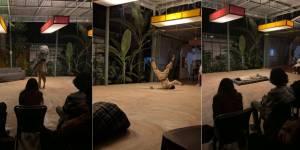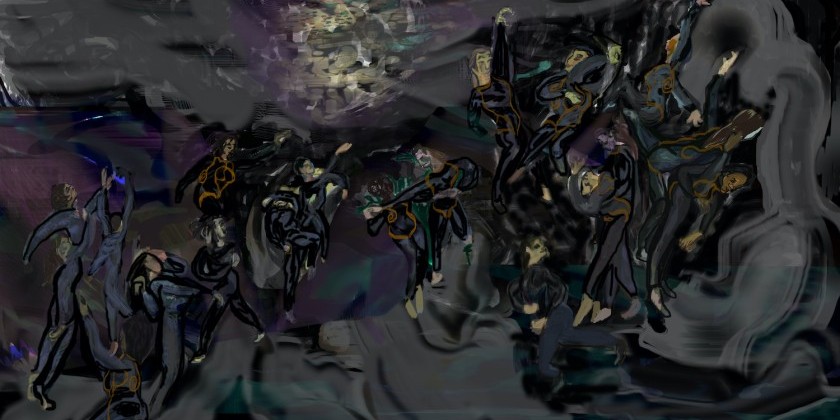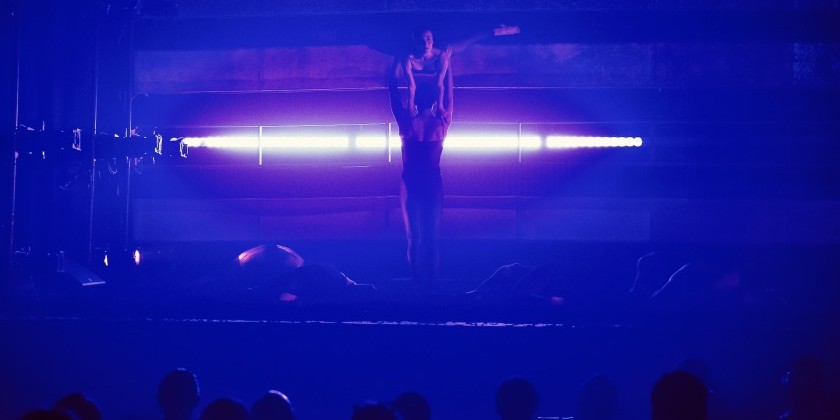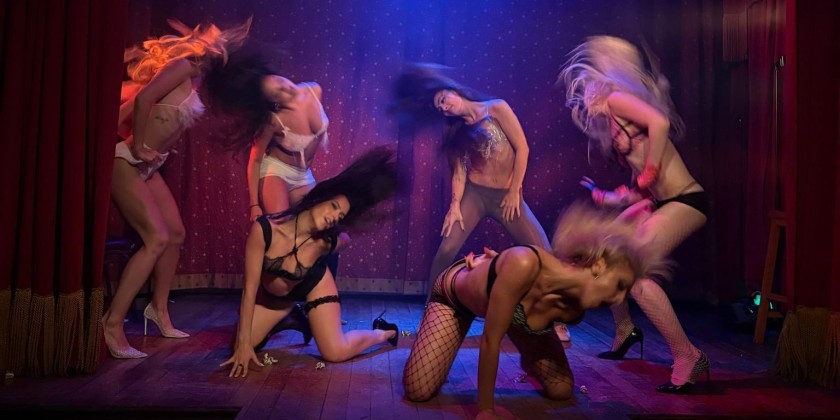AUDIENCE REVIEW: Sofia Strempek on Stefanie Batten Bland
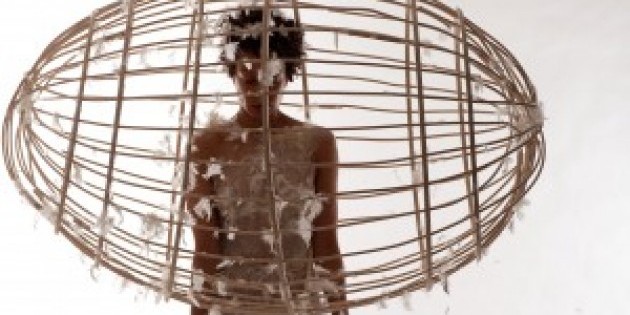
Company:
Stefanie Batten Bland
Performance Date:
05/19/2012
Company / Show / Event
Stefanie Batten Bland
Performance Date
05/19/2012
Venue / Location
Barishnikov Arts Center
A bit about you:
(your occupation, the last time you moved, your website, etc.)
Dancer who moved to NY in May. informalfloor.blogspot.com
Freeform Review:
Moving Portraits
Stefanie Batten Bland has a strong internal rhythm, and that rhythm is unapologetically slow. The second weekend of her recent concert, performed at the Baryshnikov Arts Center May 18th and 19th, was so slow as to be almost a still life. The seven dancers had more going for them than a bowl of fruit does, though. They mostly moved glacially but they also skittered and sashayed with an ease that seemed to say ‘duh, of course we can also do this.’ The performance did not provoke a strong physical response; instead Bland’s work is most felt and appreciated through the eyes.
“Terra Firma” features Benjamin Heller’s wooden egg structures in which the dancers begin in, curled, fetus like. They are baby birds ready to hatch. Batten Bland choreographs their emergence from the egg with patience, allowing each new movement- a stretching, a darting through the wooden slats- to morph from one concept to another almost unnoticeably. Not every audience member, however, has a mothers’ patience. The movements are often improvised and ambiguous and while they do morph, they do not necessarily evolve into a new idea.
A strict duo-dynamic featuring the male in a dominant role when partnered with a woman seem antiquated and add a sexual subtext that distracts from the sexually irrelevant themes of environmentalism and evolution. Rather than evolving and moving forward like the rest of the performance, the duets regress into dated precepts of what a relationship between a man and woman onstage must be.
When dancer and prop come together though, and they constantly do, Bland’s capacity to create something new expands. Faces push into suspended cloth, creating a softened imprint of their features. This same cloth can create line. Pulled taught and deftly moved to the outskirts of the stage, the swaths hanging from the ceiling are the anchors of their multi-sailed ship. And there are feathers (such plush, downy feathers!). And there is a floor covered in trash bags, turned into a pitted, roiling sea.
Some of the ambiguity of the performance as whole is a result of unreasonably large subjects that Bland attempts to comment on. “A Place of Sun,” says Bland’s website, was inspired by the BP oil spill and “investigate(s) entering and exiting space…adaptation and transformation…human and nonhuman nature…during the act of discovery/recovery.” “Terra Firma”’s trash bag sea and cloth sails provide a landscape for a piece about immigrating by boat, and those immigrants who took those journeys. The two works were conceptually distinct, but themselves not conceptually reigned in enough to find distinction within. In the choreography, immigrating and surviving disaster are both physicalized through dancers’ uplifted chest and chin; aspirations and hope project towards the audience. While the positive outlook is appreciated, one has to wonder if Bland has a ‘chin up’ attitude towards anything she choreographs about.
The relationship between audience and performer is similarly constructed to be uplifting, and in this case the positivity is fun to be a part of. At the end of “Terra Firma,” the egg sculptures are gently handed from dancer to audience. The bobbing rise of these awkward structures as the front row passes them up and over their heads feels transcendent. In this moment of gloriously unprovoked audience participation, the dancers care of the eggs, and our care of the fragile eggs (some of their thin slats have broken and spoke out jaggedly now) all come together. Communally working to end the dance feels like we are ascending towards something important together, the ‘something’ being unimportant to specify. It is simply a feeling, like a painting may work to evoke emotion from a passerby.
But it is the extreme duration of time rather than the actions themselves that provoke this feeling of, if not spiritual, then certainly at least physical evolution.
I found myself wanting the dancing- not the dancers, they were good- to be more specific. Here, dance relied on props to create definition.
Bland’s work would not be out of place in a museum gallery show. A dancer carrying an egg above his head in yellowed silhouette. The bare back of long-limbed Jesse Keller, an alabaster surface amidst a crinkled landscape of oil-black trash bags. Amongst these strong images, movement is at times inconsequential, serving primarily as the propagator to transition towards a new and no less stunning pose. But perhaps a loss of importance of the dancing benefits the intensity of the dance as an almost static visual art. And I wouldn’t mind having that painting on my living room wall.




